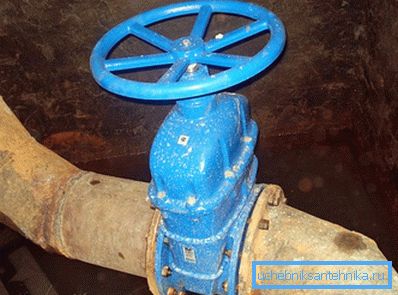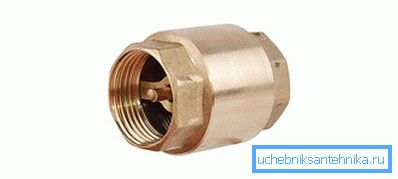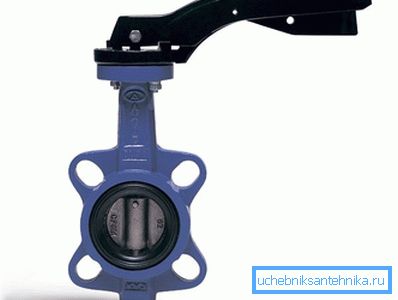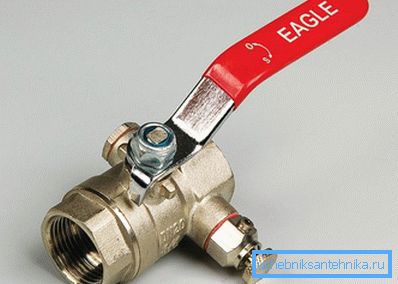Installation of valves on pipelines
Shutoff valves are the nodes of the pipeline, which regulate the flow of the fluid. As a rule, valves are manufactured from a variety of materials, such as cast iron, steel, nonferrous metal and other alloys. Thanks to their practicality, they have found wide application in various fields, including oil pipelines, gas and steam, and, of course, water communications. Each type of valves has its own installation features.
Tips

There are basic requirements for the installation of valves, failure to comply with which can lead to disastrous consequences:
- If the valves at the time of its installation was in storage, it must be cleaned of possible contamination. Cleaning is carried out with brushes, water or steam.
- If a valve is installed, then it cannot be transferred for the stem. This can damage the fixture.
- In places of pipes, where temperature drops constantly and in places of bends, installing shut-off valves is strictly prohibited. Otherwise, this will lead to an early depressurization of the valves and the pipeline. Installation is carried out on straight pipe sections.
- Welding of pipes should be carried out only when the valve is open.
- When tightening bolts or other fasteners, do not apply a large amount of force. If you overdo it, microcracks may appear: the useful life is significantly reduced. This also applies to valves that have rubber gaskets. Strong pinching must not be allowed.
- When installing flanged valves, ensure that the flanges are in good condition and that there are no possible defects.
- If the installed stop valve has a large weight, it should be supported for it, for example, pour a platform of concrete. This will prevent the destruction of fasteners and gaskets on the joint.
- Immediately before installing the board on the direction of the arrows. They indicate the correct direction of the transported fluid. Fittings should be installed with regard to the indicated direction.
Tip! In the process of installation should be careful with the valve. You can not let her fall. If it receives any external damage, its strength will be lost, as a result, corrosion may soon appear.
These are, perhaps, the main wishes and recommendations that you should pay attention to when installing valves and fittings. However, due to its great diversity, each of its species requires an individual approach. Therefore, we consider how to install valves for pipelines of several types.
Types of valves
Among a wide variety of fittings, we consider the most common of its types:
- check valve,
- butterfly valve,
- ball valve.
Tip! The installation of valves in pipelines should be carried out in the absence of pressure in the system and disconnected electrical devices.
Check valve

The installation of a check valve is necessary in cases when a pumping station is used. Its installation is performed immediately after the station or after the ratchet on the suction pipe. To install a check valve, you must use a special sgon. In this case, the sgon must be installed on both sides of the check valve. Moreover, when installing it is important to follow the arrow, which must go in the same direction with the flow of water. The diameter of the valve must fully comply with the diameter of the pipe. It is not recommended to use adapters from a smaller to a larger diameter, and vice versa.
Butterfly valve

This is where the flange connection is made. In this case, the flanges should be parallel to each other. Before installation, make sure that the surface of the flanges are free of chips, sinks, burrs and other damage that could break the tightness. Already before installation, the rotary disk must be slightly opened, but not completely. It should not extend beyond the body of the butterfly valve. After using the studs or bolts can be slightly grabbed. Further, the disk of the butterfly valve is fully opened, after which the fasteners are evenly tightened. If the installation process is correct, the shutter should easily open and close.
Ball valve

This type of valves is found in every home. To install it will be enough one adjustable wrench or a pair of carob. It is not recommended to use a gas wrench, as there is a risk of damaging the surface of the faucet. As a rule, the ball valve has external and internal threads on both sides. Without fail it should be wound tow or fum-tape. It is necessary to seal the joints of the connection valves. It is important not to overdo it and not to wind a large amount of tape or tow. Everything should be in moderation.
So, we have reviewed the main recommendations and tips on the installation of valves on pipelines. It is extremely important to comply with all technical regulations as well as technological processes. Otherwise it may lead to poor installation. Worst of all, with careless operation, you can spoil the valves.
Video
Reference information on valve service: